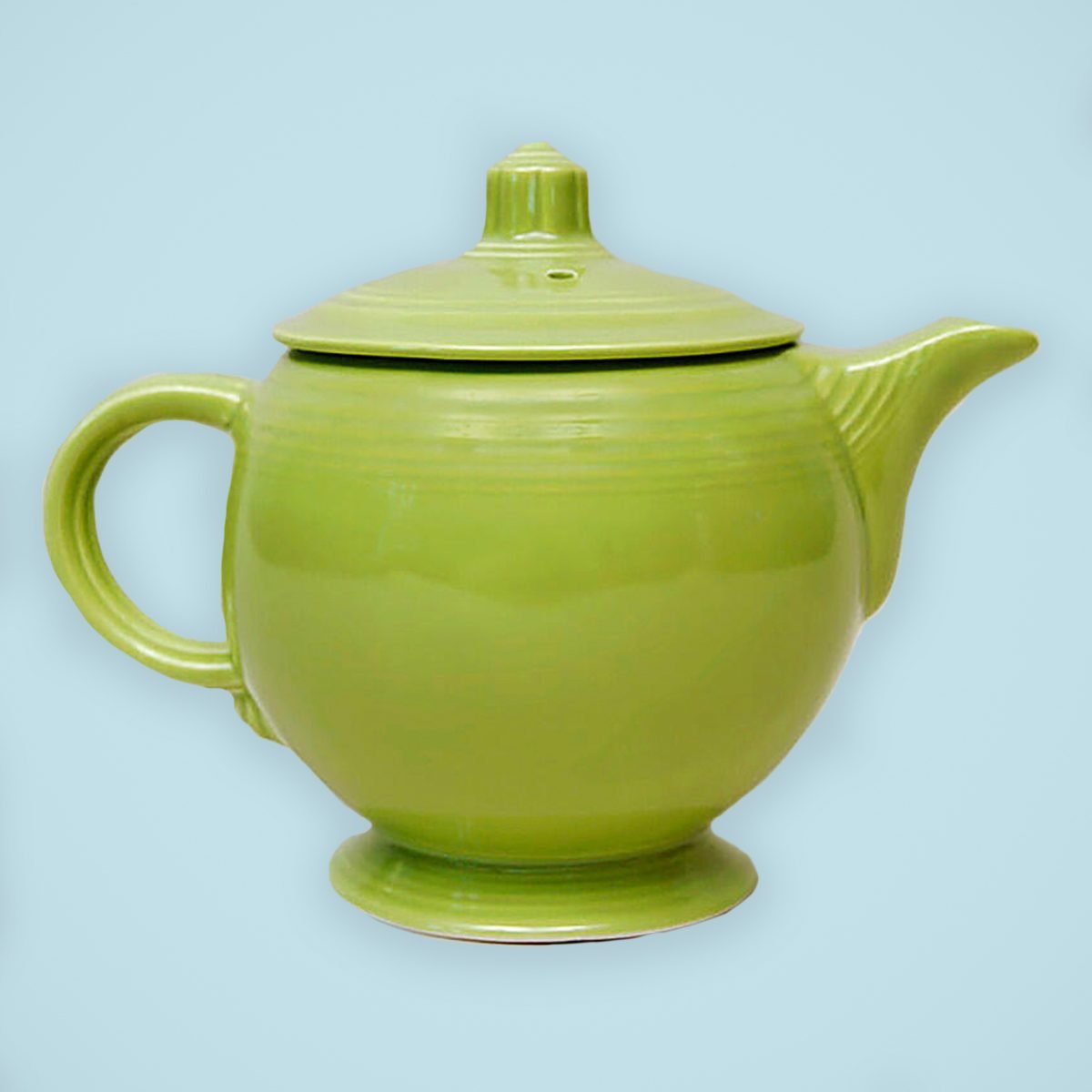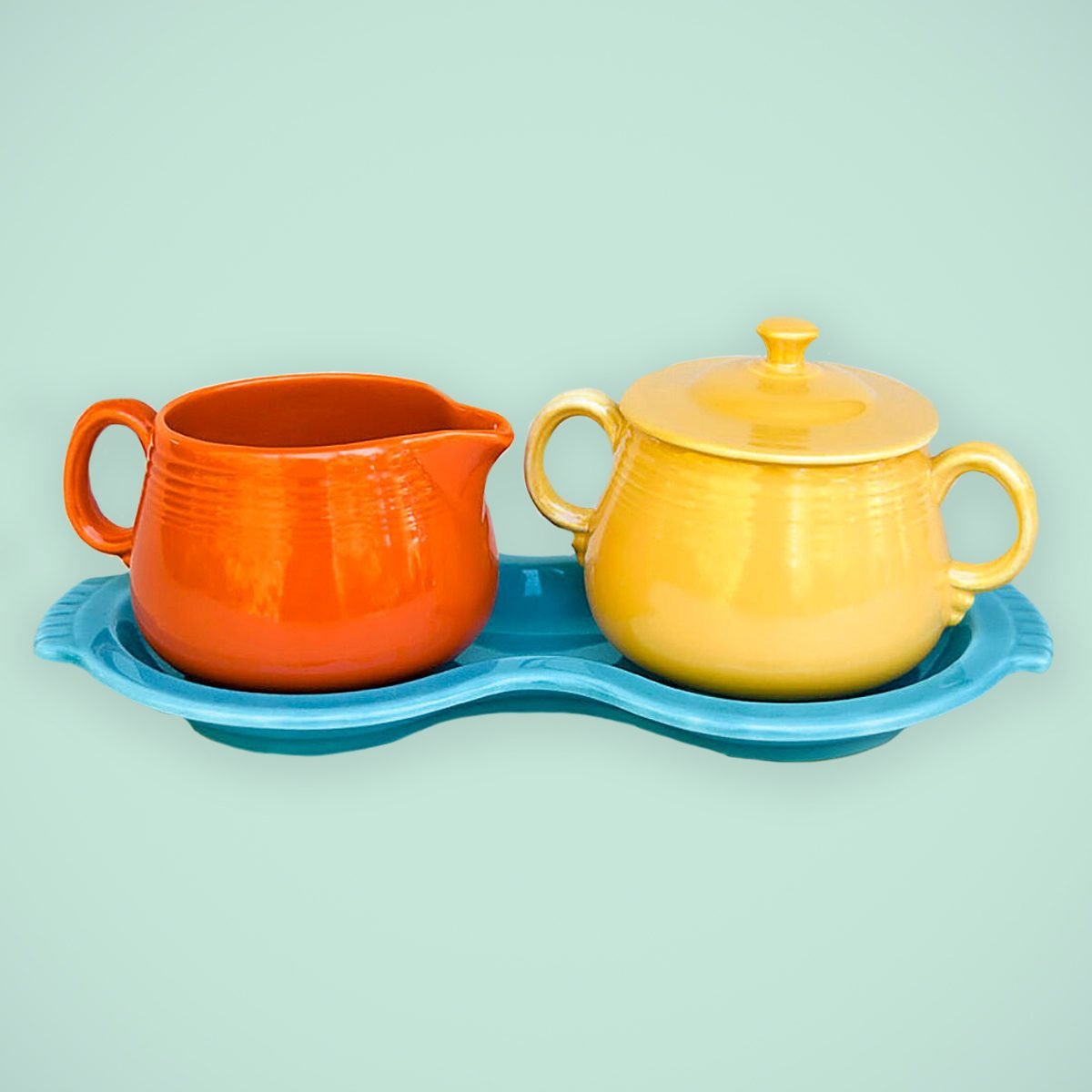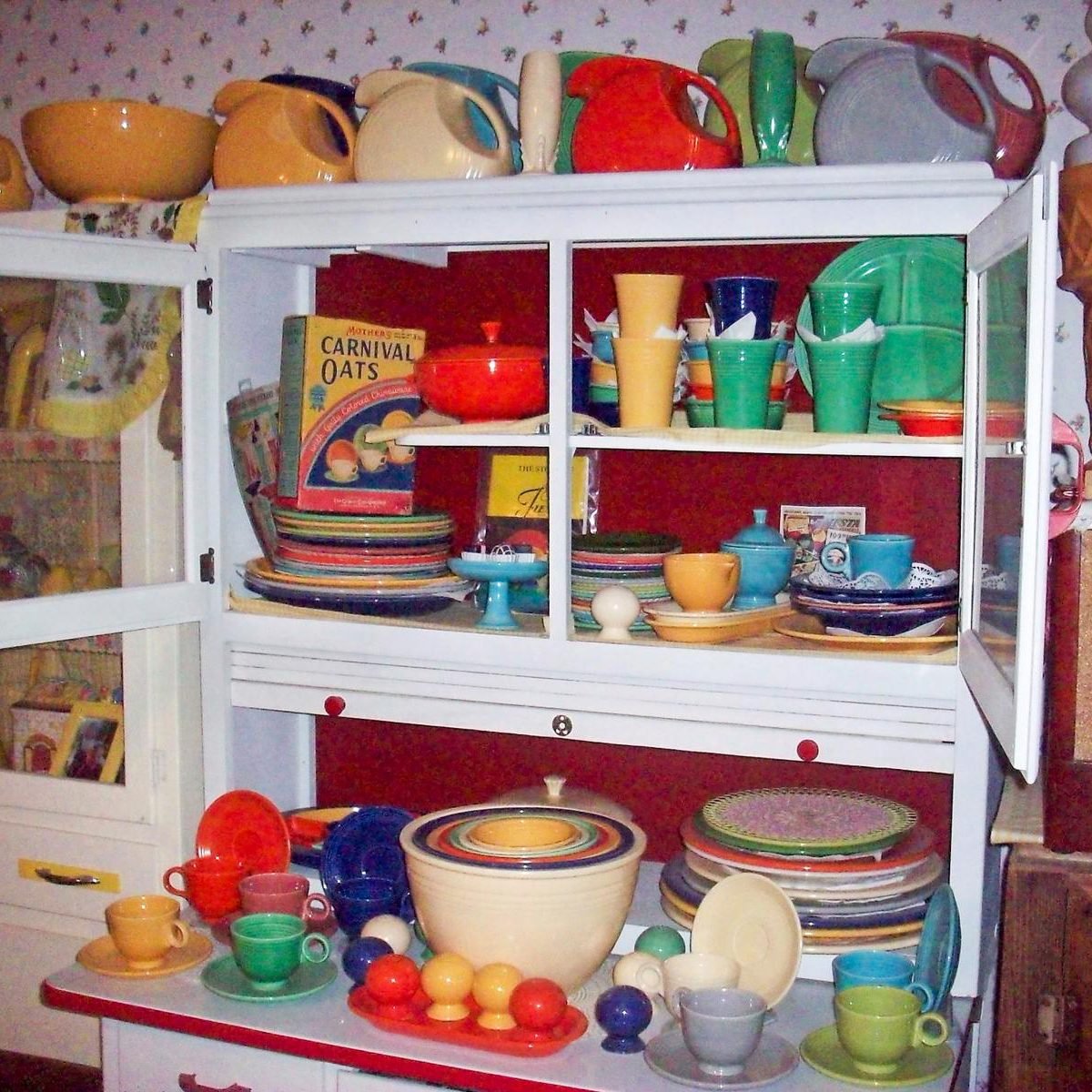
The Company Is Almost 150 Years Old
In 1873, brothers Homer and Shakespeare Laughlin built a two-kiln plant in East Liverpool, Ohio, on land that cost $300. The duo gained a reputation for producing quality dinnerware. Shakespeare pursued other interests, and the business continued as Homer Laughlin China Works. As demand increased, Homer Laughlin opened a larger factory across the Ohio River in Newell, West Virginia.
Love old kitchenware? Here’s what you should know about vintage Pyrex.
They Look Handmade
Fiesta dinnerware debuted at the Pittsburgh China and Glass Show in 1936. Frederick Hurten Rhread, art director for Homer Laughlin, developed an art deco design with concentric circles that made it look as if pieces had been formed by hand on a potter’s wheel. In fact, the china was mass-produced and sold at five-and-dime stores like Woolworths. Original covered casseroles have hand-applied handles and knobs that add to their value. As a result, your old-school Fiesta dishes could be worth thousands.

Fiesta Is Made in America
Fiestaware is proudly made in the U.S.A. All products are still created at the plant in Newell, West Virginia, the same town where the iconic Fiesta design was first developed over 75 years ago. These are the best kitchen tools made here, too.

Only 5 Colors Were Originally Available
Red, yellow, cobalt blue, medium green and ivory were the five original colors. Turquoise came along a year later. The company continually introduced new shades for changing tastes—soft pastels in the 1950s, brighter hues in the early ’60s. One color you can’t buy: hot pink. The chemical process for creating lead-free glaze prevents it.

Pieces Were Affordable
Homer Laughlin produced more than 1 million pieces of Fiesta by 1938. Consumers could buy single pieces instead of full sets, which appealed to Depression-era households, as well as mix and match colors. A 24-piece place setting cost about $11 in the 1930s. These Depression-era desserts are still worth trying today.

The Ads Were Chock-Full
Early ads for Fiesta highlighted the line’s versatility. Kitchen Kraft dinnerware—Fiestaware’s sturdy, pared-down cousin—was introduced in 1938 and is highly collectible among Fiesta aficionados.

WWII Brought Changes
Collectors covet the old orange-red glaze, sometimes called “radioactive red,” produced in the early ’40s. When a key ingredient in the color formula—uranium—was restricted to government use for nuclear bomb research (the Manhattan Project), red Fiesta disappeared. However, it returned to shelves in 1959. This vintage-style bakeware will really take you back.

Fiesta Is Still Available
After Fiesta’s peak in 1948, when 10 million pieces were shipped, demand declined until the line was retired in the early 1970s. In 1986, Bloomingdale’s partnered with Homer Laughlin to reintroduce the colorful dishes. Modern Fiesta, known as Post 86, is lead-free and safe to use in the microwave and dishwasher.

There’s an Annual Tent Sale!
Homer Laughlin hosts outdoor tent sales at the retail outlet in Newell, West Virginia. Customers come from miles around to get huge discounts on Fiesta! This year’s sale runs Oct. 3-6, so mark your calendar.

You Can Buy Fiesta for Fido, Too
Serve your furry friends in Fiesta style. The company produces pet food bowls and treat jars with cute paw prints. Try these homemade dog treat recipes for your pooch!
The post 10 Things You Need to Know About Vintage Fiestaware Dishes appeared first on Taste of Home.
Lori Vanover